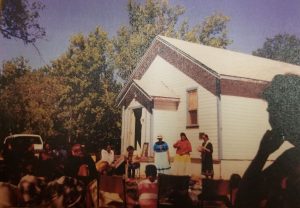
On August 4th, 1990, Two-Spirit was adopted at the 3rd Annual Gathering of Native American Gays and Lesbians that was held near Beausejour, Manitoba. According to Harlan Pruden, the Managing Editor of the Two-Spirit Journal, “Two-Spirit’ is a community organizing strategy or tool. Although it is often positioned as an identity (when it is listed alongside other identities; hence the slash), it is neither an end-point nor an identity. . . . [I]t is used as a way to identify those individuals who embody diverse (or non- normative) sexualities, genders, gender roles, and/or gender expressions . . . while evoking the time before the harshness of colonization where many, not all, First Peoples had traditions and ways that were non-binary, where some Nations had 3, 4, 5, 6, or even 7+ different genders and these genders were not only accepted and honored but also had distinct roles within their respective Nations. Today, we would generally refer to these individuals as Two-Spirit.” (cf. Stillwagon and Ghaziani, 2019).
Prior 1990 and even after 1990, non-Indigenous people used the term ‘berdache,’ to describe individuals who embody diverse (or non-normative) sexualities, genders, and gender expressions and/or roles and who are Indigenous to Turtle Island and this community strongly felt ‘berdache’ was a derogatory and offensive term.
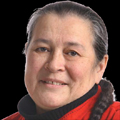
Grandmother, mother, sister, daughter, teacher, counselor, administrator, mentor and elder, Dr. Myra Laramee (First Nations Cree) brought ‘Two-Spirit’ to a sharing circle of eight (80) Indigenous LGBTQI people from across North America at the 1990 Gathering, and Two-Spirit was quickly adopted as a spirit-name. “I would like for our people to understand that Two-Spirit came to us in a dream for our people and community, and I was merely the vessel – I did not coin this term, word or phrase – it came from the Creator or the Great Mystery,” said Myra Laramess. “It is sacred and is more than just words – it is a spirit/heart language (if you know what I mean). When Two-Spirit is used it invokes our sacredness and reminds us that we have always been here, and we will always be here. As a result, with Two-Spirit comes a great responsibility, to those who use it, as we walk and work in a sacred way with and for our people.”
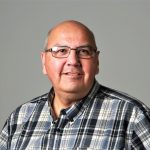
According to the respected Two-Spirit elder, Albert McLeod, who was also at this historic gathering, said, “Two-Spirit was received through ceremony and many Indigenous LGBTQI people and groups adopted it the following year,” said Albert McLeod. “It is important to note that with the assertion of this new term, it was an act of sovereignty of body and land. The community rejected the colonial and offensive term of ‘berdache’ and replaced it with Two-Spirit. “Spirit-naming is an important part of my identity and healing. Embracing the Two-Spirit name has defined our place in Indigenous history and culture.”
Albert continues, “It affirms that we are spiritual beings aligned in balance with all facets of creation. The act of “spirit-naming” is an act of decolonization, for example, First Nations have replaced the colonial names of their communities with new names in their Indigenous languages. The term, Two-Spirit”, re-affirms for Indigenous LGBTQ+ people that we are linked spiritually to our families, communities and nations. This affirmation also links us to the spiritual teachings that strengthen our relationship with the natural worlds and dimensions, ex. plant, animal, water, weather, astronomy, etc.”
The lead image included in this post was provided by Albert McLeod from the 1990 gathering where ‘Two-Spirit’ was gifted to the community in ceremony.
With this Two-Spirit milestone, here are some personal observations and reflections shared from today’s Two-Spirit community members:
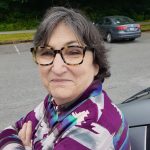
Sandy Laframboise (Métis) lives in Vancouver and is a Two-Spirit Trans identified woman, retired psychiatric nurse advocate, queer community organizer since 1971.
“This celebration has been a long time coming. A lot of walk in our moccasins has happened to ensure that we are part of the circle as we decolonize this old pattern. We stand on the shoulders of giants before us and the younger generation will stand on our shoulders.”
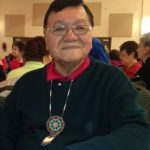
Edward Lavalle is a traditional Plains Nehiyaw (Cree) of the Sturgeon Lake First Nation in Saskatchewan, is an Indigenous Advisor and Elder in Edmonton and sits on the Board of Directors of several Edmonton organizations including the Edmonton Two-Spirit Society.
“I deeply appreciate that the people at this historic gathering gifted us Two-Spirit, so our community can be recognised as being distinct and helps us as we work to revive our Two-Spirit ways and roles. This is term is important tool for us to organize and also roots us to our rich history that was almost taken away from us by colonizers and their Christian ways. These foreigners where threatened by the sacredness and respect that Two-Spirit people held within our Cree Nation and by our people. Two-Spirit helps us as we are developing and working to once again to be up lifted and held in honor within our respective Nations. Two-Spirit also reminds us of our collective work and purpose for the entire community: gay, lesbian, bi and trans and the oneness we all share. While I know there are some in our communities don’t use this term or reject it, I like Two-Spirit, which is now internationally recognized and calls on us together to find strengthen and our voices for respect, acceptance and love!”
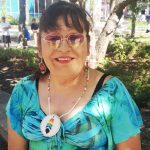
Gayle Pruden who is Ojibwe and fluent speaker, was raised in Little Saskatchewan community located in central Manitoba, Treaty 2 territory, is an accomplished public speaker on her Two-Spirit advocacy in the pow-wow community as a jingle dress dancer and her life from childhood to where she is now.
“I’m proud to be known as Two-Spirit as it is honoring and self-explanatory to our people as it opens-up spaces and places for all gender for all people to represent ourselves for who we really are where I can be myself – a strong Anishinaabe woman with the powerful Grandparent, our Creator, watching over me and all of us as we dance our sacred and healing dance for all our people!”
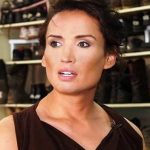
Chevi Rabbit (First Nations Cree) is an Indigenous Transgender activist and an accomplished public speaker on gender identity and inclusion. In 2017, Chevi as appointed to Avenue Edmonton magazine’s Top-40-Under-40 and is the founder of the Hate to Hope campaign to create awareness around LGBTQ bullying and violence. Chevi is the president and founder of Maskwacis Two-Spirit Society and was recognized by Alberta’s premier as top 25 influential human rights advocates. Rabbit sits on many boards such as (AWPA) Aboriginal Professional Women’s Society. Recently, Chevi was added as a Two-Spirit consultant after meeting with Alberta Indigenous Minister, Rick Wilson.
“The 30th anniversary and the 3rd annual gathering of our vibrant Two-Spirit communities highlights our communities’ survival, and how far we have come and how far we still need to go, despite recent strides in the Canada’s LGBTQ2 movements. Our Two-Spirit community still suffers from trauma inflicted on our gender identity, culture, and Indigenous social lands scarred by Canada’s residential school system. Our gender was colonized, and Indigenous gender diversity suppressed. Two-Spirit communities lost our place within our Indigenous communities. Right now, we are currently fighting for our rightful place within Indigenous society and repatriate ourselves in our culture. It’s VITAL that we continue gatherings, meeting, connecting with each other and recognize our rich history as Two-Spirit peoples.”
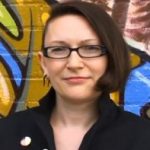
Margaret Robinson is a two-spirit L’nu from Eskikewa’kik Nova Scotia, and a member of Lennox Island First Nation.
“I hesitated to identify as Two-Spirit for years because the reading I did emphasized ceremonial and religious roles for people who lived gender differently than others. But I’m an atheist without any spiritual gifts. So I looked at the tradition and I focused on the element of service. I asked myself, What are my skills, and how can they serve my nation? And more, how can I draw on my gendered experience to fulfil my role? Since then, my work has been more integrated with my identity, and it feels better—more authentic. It’s a learning journey, but that’s what I like about two-spirit identity. It’s not a set of rules. It’s an invitation to a community, to conversations, and to building a future for our people.”